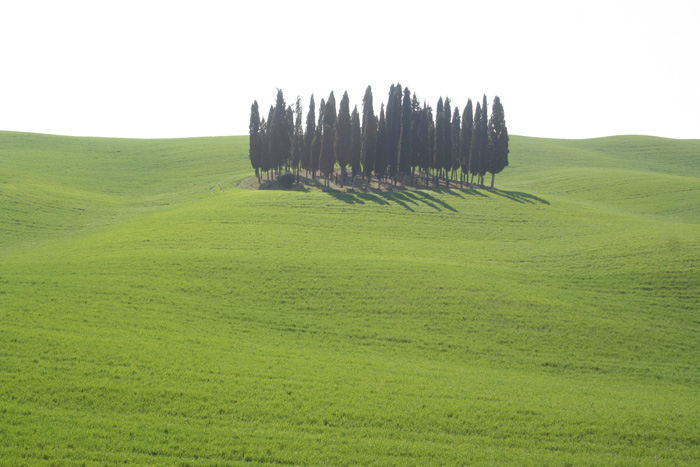|
In Tuscany, bunches of cypresses were planted as bird traps. The Italian cypress attracts birds. Some of the branches and twigs, as well as constructed false perches, were coated with birdlime, an adhesive substance usually made from crushed mistletoe berries, or sometimes from oak-gum. It is spread on a branch or twig, upon which a bird may land and be caught. The muscles of perching birds allow the toes to pull inwards with some force but there are no strong muscles to open them up. The use of birdlime is now illegal in many jurisdictions.
|
 |
||||
Bunch of cypresses in a Tuscany landscape, San Quirico d' Orcia [1]
|
||||
There are two distinct groups of Cypress trees in the Val d'Orcia. The first group of cypress trees is located at 43 ° 03’45.62 “N 11 ° 33’31.86″ E, while the second group is along a dirt road at 43 ° 03’38.99 “N 11 ° 33’30.49″ E.
|
||||
Viscum album Viscum album is a species of mistletoe in the family Santalaceae, commonly known as European mistletoe, common mistletoe or simply as mistletoe. It is native to Europe and western and southern Asia. |
||||
Viscum album is a hemiparasite on several species of trees, from which it draws water and nutrients. It has a significant role in European mythology, legends, and customs. In modern times, it is commonly featured in Christmas decoration and symbology. The mistletoe was one of the many species originally described by Linnaeus. Its species name is the Latin adjective albus "white". It and the other members of the genus Viscum were originally classified in the mistletoe family Viscaceae, but this family has since been sunk into the larger family Santalaceae. Mistletoe is present in Classical literature as well: The 4th-century BC Greek writer Aeneas Tacticos recommends (34.1–2) birdlime be used as a substance which will prevent fires from burning wood or other combustible materials, when smeared upon their surfaces, and Virgil writes about it in the sixth book of the Aeneid, where he narrates Aeneas' descent into Hades. The sibyl of Cumae, Virgil says, had ordered Aeneas to find a golden bough, which would have placated the Gods: according to anthropological research, it appears that such branch was, indeed, mistletoe.
|
|
|||
 |
||||
Visccum album
|
||||
The Bird-catcher and the Blackbird
|
||||
Bird trapping techniques to capture wild birds include a wide range of techniques that have their origins in the hunting of birds for food. While hunting for food does not require birds to be caught alive, some trapping techniques capture birds without harming them and are of use in ornithology research.
|
||||
Tacuina sanitatis (XIV century), 14th century, by unknown master - book scan, Public Domain, https://commons.wikimedia.org/w/index.php?curid=1638840
|
||||
In his History of British Birds, Thomas Bewick says that blackbirds "readily suffer themselves to be caught with bird-lime, nooses and all sorts of snares".[1] In general it was trapped for caging as a songbird rather than for food, but there existed an ancient Greek tradition that the songster was under the special protection of the gods and that nets could not hold it. No less than three poems in the Greek Anthology preserve this belief. The earliest is by Archias of Antioch and concerns fieldfares that are trapped while the blackbird is left free since "the race of singers is holy".[2] Antipater of Sidon tells of a blackbird and a thrush caught in separate snares, from which the blackbird escapes since "even deaf bird-snares feel compassion for singers".[3] Finally, in the poem by Paulus Silentiarus, where a fieldfare and a blackbird are netted, it is Artemis herself, the goddess of hunting, who frees the songbird.[4]
|
||||
| Birdlime
|
||||



